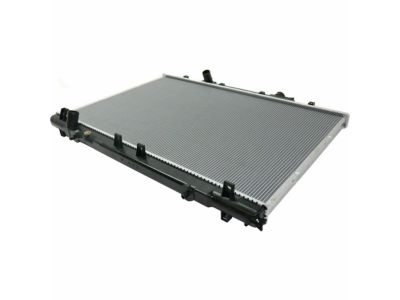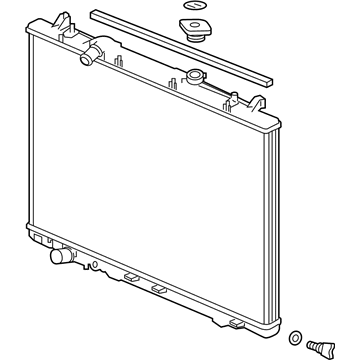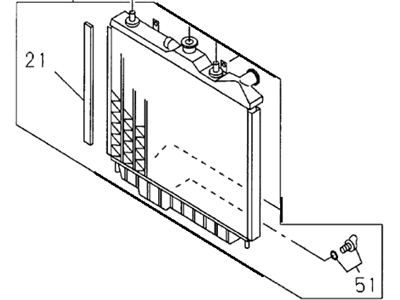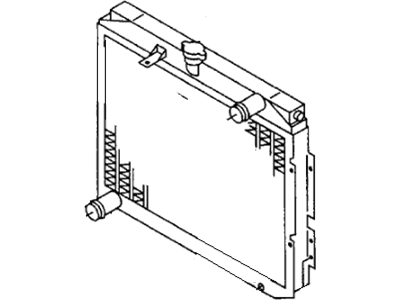×
- Hello
- Login or Register
- Quick Links
- Live Chat
- Track Order
- Parts Availability
- RMA
- Help Center
- Contact Us
- Shop for
- Honda Parts
- Honda Accessories

My Garage
My Account
Cart
Genuine Honda Passport Radiator
Cooling Radiator- Select Vehicle by Model
- Select Vehicle by VIN
Select Vehicle by Model
orMake
Model
Year
Select Vehicle by VIN
For the most accurate results, select vehicle by your VIN (Vehicle Identification Number).
10 Radiators found

Honda Passport Radiator (Denso)
Part Number: 19010-5J6-A01$284.74 MSRP: $405.62You Save: $120.88 (30%)Honda Passport Radiator Assembly
Part Number: 8-52475-960-0$231.96 MSRP: $501.62You Save: $269.66 (54%)Honda Passport Radiator Assembly
Part Number: 8-52478-811-0$443.84 MSRP: $640.47You Save: $196.63 (31%)Honda Passport Radiator Assembly
Part Number: 8-97209-553-0$342.66 MSRP: $488.12You Save: $145.46 (30%)
Honda Passport Radiator
It is a component that helps in cooling the engine by carrying heat away from the coolant then dispersing it in the surroundings; common to Honda Passport automobiles. Usually built with fins and tubes, Radiators could be made with an aluminum core and plastic or aluminum tanks, or copper/brass materials. Fundamentally, the working of the Radiator is such that it must help transfer heat from the engine as fast as is possible in order to enhance the system's efficiency. Some of the problems that are frequently observed in Radiators are leaks which can be fixed in several ways but replacement is deemed to be the most ideal. Performance Radiators are an improvement over the OEM pieces since most are fabricated from lightweight aluminum with improved design for improved flow by means of utilizing the premier thermal and fluid properties. These Radiators have larger tubes and more fins per inch for enhancing the rate of coolant flow and to provide better heat shedding to the engine and thus a cooler engine. There are direct fit versions that can be used for bolt in applications and the universal versions that may need to be adapted for installation. In summary, Radiators are crucial players in the regulation of the efficiency of operations of the Honda Passport vehicles and their longevity.
In search of affordable OEM Honda Passport Radiator? Consider browsing through our extensive inventory of genuine Honda Passport Radiator. Not only do we provide market-leading prices and a manufacturer's warranty, but we also pride ourselves on exceptional customer service and swift delivery.
Honda Passport Radiator Parts Questions & Experts Answers
- Q: How to remove and install radiator and Coolant Reservoir for the Honda Passport?A:Disconnect the negative battery cable. Drain the coolant into a container. Remove both the upper and lower radiator hoses by loosening the hose clamp and pulling off the hose. Disconnect the reservoir hose from the radiator filler neck. On 1997 and earlier models, the hose to the coolant reservoir is routed to the left because the coolant reservoir is located on the left side of the engine compartment. On 1998 and later models, the hose to the coolant reservoir is routed to the right, because the coolant reservoir is located at the right front comer of the engine compartment. Remove the cooling fan and shroud. If equipped with an automatic transmission, disconnect the cooler lines from the radiator at the bottom of the radiator, then plug the hoses and cap the fittings. Place a drip pan underneath to catch the fluid. Remove the two upper radiator mounting brackets. Lift out the radiator. Be aware of dripping fluids and the cooling fins, which are razor-sharp. Inspect the radiator for leaks, damage, and internal blockage. If it needs to be repaired, take it to a radiator shop or dealer service department. Clean bugs and dirt from the radiator with compressed air and a soft brush, but be careful not to bend the cooling fins. Inspect the two lower insulators for cracks, tears, and deterioration. If the insulators are worn or damaged, replace them. When installing the radiator, make sure that the lower insulators are in place and make sure that the locator pins on the radiator are correctly engaged with the insulators. After installation, fill the cooling system with the proper mixture of antifreeze and water. On models with an automatic transmission, check and add automatic transmission fluid as needed. Start the engine and check for leaks. Allow the engine to reach normal operating temperature, indicated by both radiator hoses becoming hot. Recheck the coolant level and add more if required. On some models, the coolant reservoir simply pulls up and out of its mounting bracket. On most models, it is bolted to the fenderwell. Pour the coolant into a container. Wash out and inspect the reservoir for cracks and chafing. Replace it if damaged. Wash the outside and inside of the reservoir with soapy water and a brush to remove any dirt or scale, to make reading the coolant level easier. Installation is the reverse of removal.






















